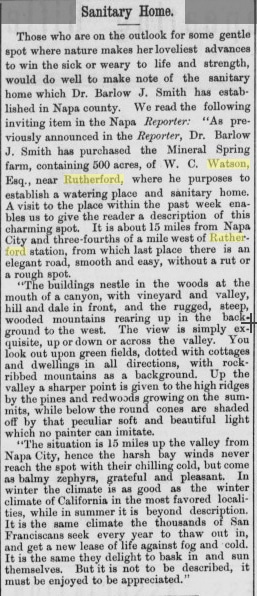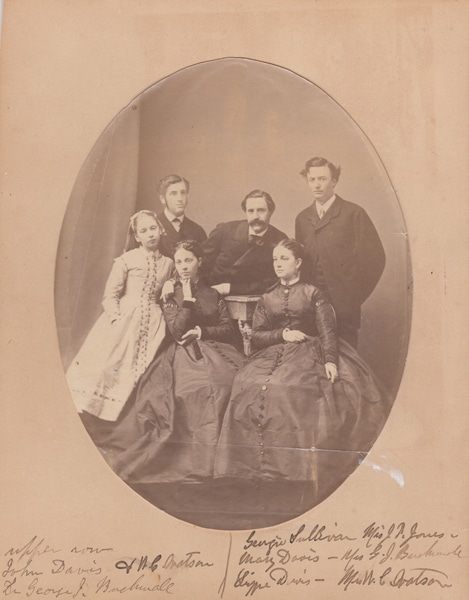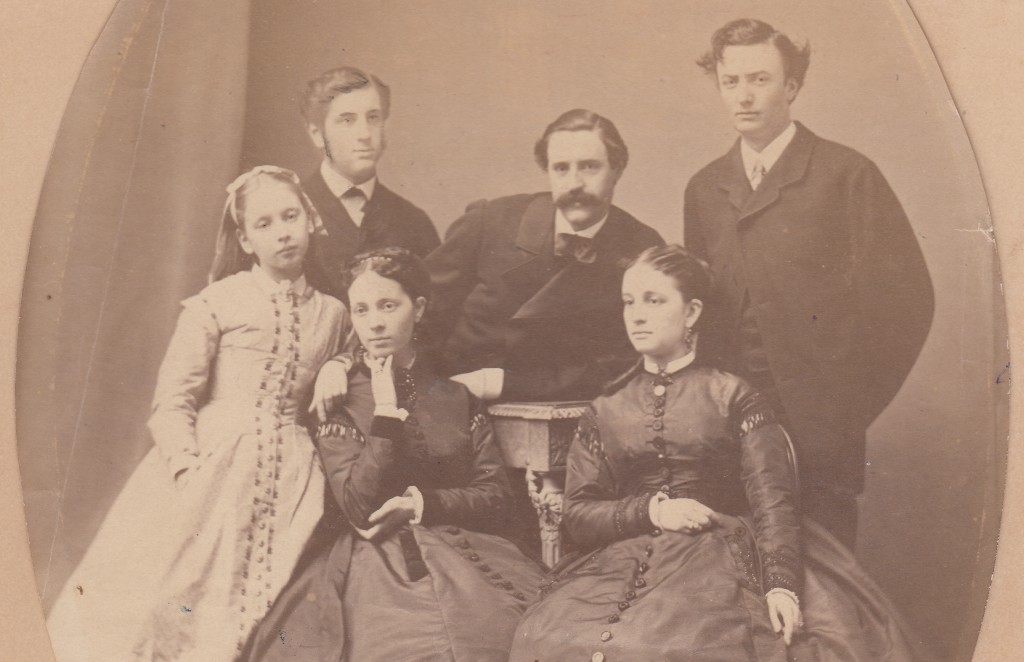People, Rutherford
Taking the Waters in Rutherford
by Marie Bowen, NCHS volunteer

The March 1, 1878, edition of the Napa Register reports Elizabeth Watson’s acquisition of 500+ acres near Rutherford from “Smithsonian Springs Hygienic Medical Association” and “Barlow J. Smith.” Thinking this probably was the same hydrotherapy center where Merritt Kellogg practiced briefly in 1877 before his involvement with St. Helena’s Rural Health Retreat, I focused on the, to me, unknown Barlow J. Smith.
In a 2004 online article for Adventist Review, Daphne Odell (great-granddaughter of Ellen White, co-founder of the Seventh-day Adventist Church) identified Dr. Smith as the operator of a hydrotherapy center in San Francisco. (Newspaper searches confirmed the name of the center was “Smithsonian Medical and Phrenological Institute.”) Odell further reported that, by the summer of 1877, Merritt Kellogg was assisting Dr. Smith in his San Francisco enterprise and then served as house physician at Smith’s retreat “two miles west of Rutherford Station…”
In his book Napa Valley Heyday Richard Dillon notes that Smith’s property had previously been Nook Farm owned by W. C. Watson who “piped water from an upstream spring of iron, white sulphur, and magnesia water for drinking and bathing”- the perfect setting for Dr. Smith.

So here were the Watsons again. Had Dr. Smith acquired his holdings from W. C. Watson, only to sell them to Elizabeth Watson in 1878? Yes. Pacific Rural Press in July 1877 announced that Dr. Smith “has purchased…500 acres…from W. C. Watson, near Rutherford,” for the purpose of a “sanitary home.” William Campbell Watson, Secretary of Bank of Napa, was the husband of the same Elizabeth Watson to whom Barlow Smith sold back his property in 1878. Elizabeth was George Yount’s granddaughter, maiden name Davis. And the land that formerly housed the “Smithsonian Springs Hygienic Medical Association” retreat? It became the winery Inglenook, sold in 1879 by the Watsons to Gustave Niebaum and today run by Francis Ford Coppola.
I don’t know if or why Dr. Smith’s practice failed in Rutherford – perhaps the venture faltered when Merritt Kellogg departed for St. Helena. By January 1879, a Pacific Rural Press newspaper advertisement announced the resumption of Dr. Smith’s San Francisco practice. Born in Connecticut in 1827, he died in San Francisco, June 26, 1900. Beyond his interest in phrenology, a forerunner of sorts to neuropsychology, Dr. Smith was a follower of Vincent Priessnitz, considered the father of hydrotherapy. Dr. Smith’s newspaper advertisements promoted hydropathy, electricity, and pure food – in essence: hygiene over drugs.
Reference List:
Dillon, Richard. Napa Valley Heyday. San Francisco: The Book Club of California, 2004
Napa Register, March 1, 1878, p. 3
Napa County Recorder, Napa, California
Odell, Daphne. “The Legacy of the California Kellogg.” Adventist Review Online Edition, 2004
Pacific Appeal, No. 28, February 1, 1877, p. 2
Pacific Rural Press, Volume 14, No. 2, July 14, 1877
Pacific Rural Press, Volume 17, No. 3, January 18, 1879


